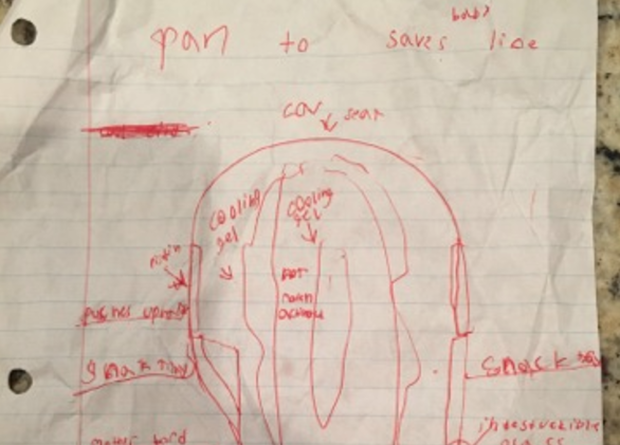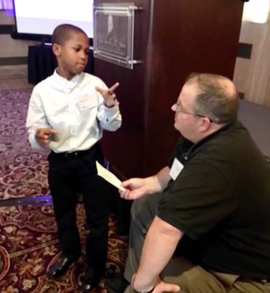“Easing the struggle of
implementation, Gura and Reissman provide a practical guide for teachers to not
only get their feet wet, but also dive into PBL with a specific focus on
literacy... Additionally, they make the case that PBL is an essential part of
the literacy classroom, as it reaches cross-curricular goals of the Common Core
State Standards (CCSS).”
“This book makes a
meaningful contribution to teacher/practitioner literature. It is organized to
first motivate teachers to consider a new approach to standards-based teaching,
and the authors provide strong rationale for incorporating viable and authentic
projects into the literacy classroom. Twenty easy-to-follow guides assist
teachers with starting their journey to PBL activities.”
Cite This Article as: Teachers
College Record
Date Published: May 22, 2017
http://www.tcrecord.org / http://www.tcrecord.org/Content.asp?ContentID=21986
ID Number: 21986, Date Accessed: 7/10/2017 7:00:15 PM
Project Based Literacy: Fun Literacy Projects for Powerful Common Core Learning
reviewed by Jason Trumble — May 22, 2017
Date Published: May 22, 2017
http://www.tcrecord.org / http://www.tcrecord.org/Content.asp?ContentID=21986
ID Number: 21986, Date Accessed: 7/10/2017 7:00:15 PM
Project Based Literacy: Fun Literacy Projects for Powerful Common Core Learning
reviewed by Jason Trumble — May 22, 2017

Title: Project Based Literacy: Fun Literacy Projects for Powerful
Common Core Learning
Author(s): Mark Gura, Rose Reissman
Publisher: Information Age Publishing, Charlotte
ISBN: 1681232928, Pages: 214, Year: 2015
Search for book at Amazon.com
Author(s): Mark Gura, Rose Reissman
Publisher: Information Age Publishing, Charlotte
ISBN: 1681232928, Pages: 214, Year: 2015
Search for book at Amazon.com
or from its publisher @ http://www.infoagepub.com/products/Project-Based-Literacy
As I work with preservice and in-service teachers, I challenge them to consider how their teaching and curriculum engages students in authentic ways while also increasing their digital age competencies. We explore how real world, digital age learning must include communication, collaboration, critical thinking, and creativity. Project based learning (PBL) exemplifies these skills and promotes real-world learning for students of all ages, but it is difficult to do, and do well. Easing the struggle of implementation, Gura and Reissman provide a practical guide for teachers to not only get their feet wet, but also dive into PBL with a specific focus on literacy.
As I work with preservice and in-service teachers, I challenge them to consider how their teaching and curriculum engages students in authentic ways while also increasing their digital age competencies. We explore how real world, digital age learning must include communication, collaboration, critical thinking, and creativity. Project based learning (PBL) exemplifies these skills and promotes real-world learning for students of all ages, but it is difficult to do, and do well. Easing the struggle of implementation, Gura and Reissman provide a practical guide for teachers to not only get their feet wet, but also dive into PBL with a specific focus on literacy.
Project based literacy: Fun literacy projects for
powerful common core learning begins with an explanation and rationale
for incorporating PBL with literacy, and then the authors provide practical
tips for teachers, followed by twenty detailed projects. Finally, they wrap up
the book with tips for incorporating technology into PBL. This logical progress
allows the reader to develop a conceptual understanding of the concept and
contextualize the pedagogy before putting it into practice.
Readers get their feet wet in the
introduction as the authors propose PBL as a viable alternative to the humdrum
test-centric curriculum dominating many schools. Gura and Reissman suggest that
moving literacy teaching to well-designed PBL activities allows students to be
self-motivated in naturally and authentically achieving essential literacy
competencies. Throughout the introduction, they reiterate that during
well-designed literacy projects, student motivation increases as students
invest in the process of learning through doing. They propose that teachers
will enjoy teaching through PBL as well.
Additionally, they make the case that PBL is an essential part of the literacy classroom, as it reaches cross-curricular goals of the Common Core State Standards (CCSS).
Additionally, they make the case that PBL is an essential part of the literacy classroom, as it reaches cross-curricular goals of the Common Core State Standards (CCSS).
Chapters One, Two, and Three define PBL and
refine the reader’s understanding of what differentiates a classroom activity
from a PBL exercise by identifying core elements of the project based approach.
This approach finds its foundation in the English Language Arts mentioned in
Chapter One, and is expanded upon in Chapter Three. Four of the language arts
are identified in this book: reading, writing, listening and speaking. Although
the authors do not include seeing and visual representation, given they are not
part of the common core literacy standards, there is an implicit understanding
that PBL is effective at engaging all the essential elements of the English
Language Arts. The core elements for PBL are derived from the ELA standards,
and are supplemented by the eight essential elements listed on www.bie.org. This book was
published in 2016, and bie.org has
updated their PBL frameworks to look a little different from what is presented
in this work. Much of these changes are semantical, and Gura and Reissman
sufficiently explain what must be analyzed for a teacher to successfully
implement PBL activities.
The explanations in Chapter Three identify the Common Core literacy standards and discuss how this pedagogical and curricular shift in the classroom meets all four literacy categories with rigor and authenticity. These chapters all discuss how PBL is a natural fit for the Common Core and the literacy classroom.
The explanations in Chapter Three identify the Common Core literacy standards and discuss how this pedagogical and curricular shift in the classroom meets all four literacy categories with rigor and authenticity. These chapters all discuss how PBL is a natural fit for the Common Core and the literacy classroom.
In Chapters Four and Five, the authors
discuss some practical benefits of literacy projects. They discuss how PBL
activities create intrinsic motivation, because they focus on the students’
real world. Students can find purpose in learning about and impacting their
community beyond the classroom as they engage in the project. This naturally
moves into the tools and competencies for digital age learners. These are
skills that incorporate technology and collaboration, and prove essential for
the 21st century learner. The connections between these skills and PBL
experiences are detailed in Chapter Five.
Chapters Six, Seven, and Eight move to support
the development of teachers’ pedagogies as they offer practical solutions to
general questions for PBL experiences. They address the elephant in the room
and the reason many teachers stay away from PBL instruction: classroom
management. They discuss four strategies for understanding how to manage the
learning environment. The authors then provide strategies for teachers to
procure an authentic audience for students’ performances. Then, before delving
into the practicality of a proposed project, the authors discuss assessment in
relation to Common Core standards and learning goals of literacy projects. The
practical strategies in these chapters set the stage for Part Two.
Part Two is where Gura and Reissman provide
actual projects that are ready to be implemented in the literacy classroom.
Each of the twenty chapters begins with an activity summary followed by
specific procedures leading to the student learning project. The authors
predict the amount of time a project will take, and then comprehensively align
the PBL activity to both common core standards and the ISTE Standards for
Students.
Assessment suggestions are outlined and the authors describe possible avenues for authentic sharing of students’ work. Each project chapter ends with technology connections, literacy connections, suggested texts, and project extensions. The logic of instruction for each of the projects allows teachers to quickly read and reference as they implement PBL activities. The final chapter includes tips and tricks for incorporating technology, and serves as a guide for teachers who may be less comfortable with digital technologies.
Assessment suggestions are outlined and the authors describe possible avenues for authentic sharing of students’ work. Each project chapter ends with technology connections, literacy connections, suggested texts, and project extensions. The logic of instruction for each of the projects allows teachers to quickly read and reference as they implement PBL activities. The final chapter includes tips and tricks for incorporating technology, and serves as a guide for teachers who may be less comfortable with digital technologies.
This book makes a meaningful contribution to
teacher/practitioner literature. It is organized to first motivate teachers to
consider a new approach to standards-based teaching, and the authors provide
strong rationale for incorporating viable and authentic projects into the
literacy classroom…
Overall, this book is a fantastic guide for the
teacher wanting to engage their students in real-world, authentic learning. For
those teachers anxious about change and technology use, Gura and Reissman
provide scaffolds and supports for reference. As teachers, we consider how to
make learning real and authentic for our students, and while it can be
difficult, resources like Project-based literacy: Fun literacy projects
for powerful common core learning, help facilitate the exploration of new
pedagogies and approaches to teaching in the digital age.
Read the full article at its source: http://www.tcrecord.org/Content.asp?ContentID=21986



































 An example of a student-developed DBQ question.
An example of a student-developed DBQ question. 